Ever wondered about the nature of the wood you’re using for your projects? Is spruce a hardwood or softwood? Let’s embark on a journey to uncover the true character of this versatile timber. Read on and let’s spruce up your knowledge together!
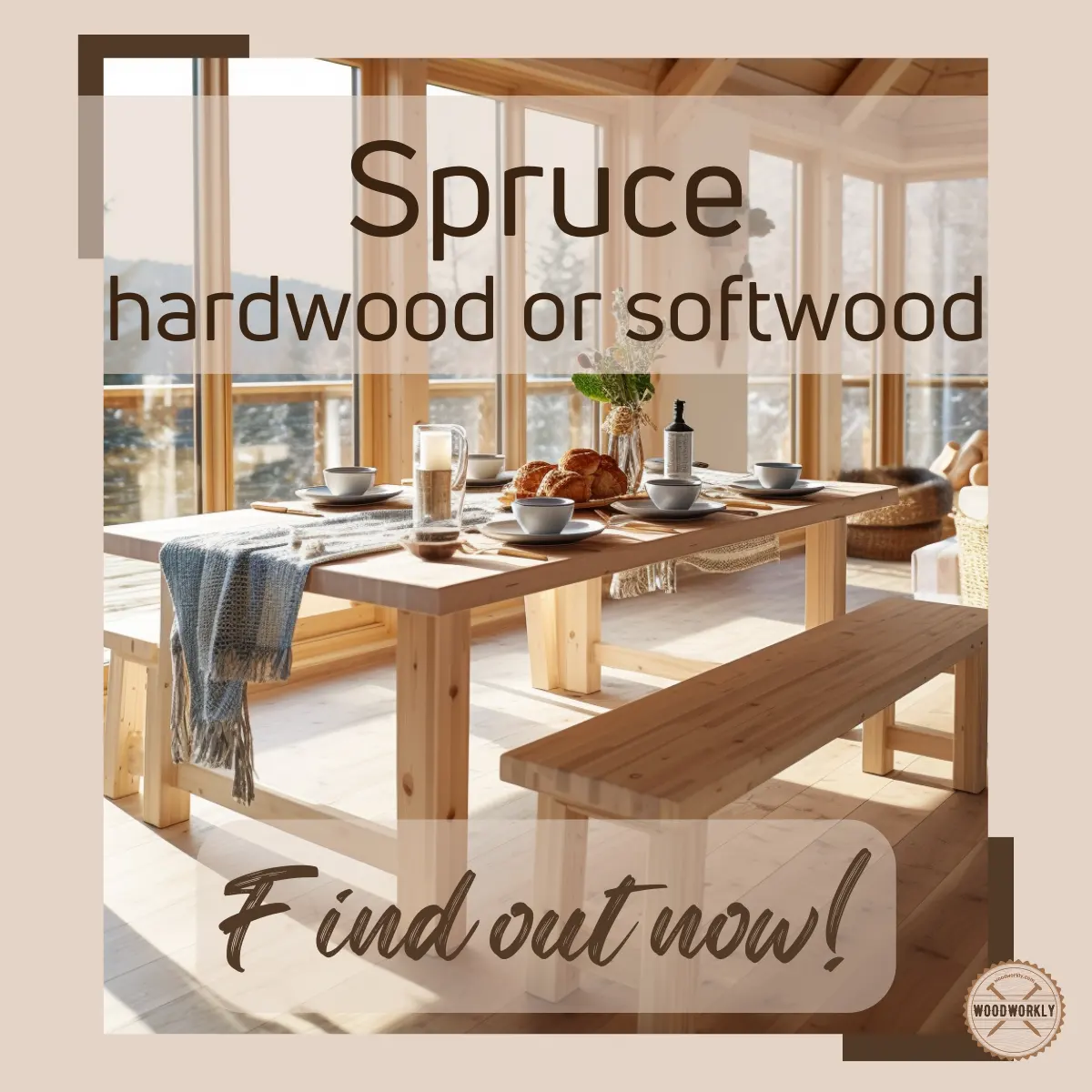
Spruce is a popular wood for various woodworking projects it has a cream to white to yellow wood with even texture and straight wood grain.
It is commonly used for the construction of foundations, beams, crates, and joists and to generate energy.
When it comes to woodworking, I was surprised by its great qualities and curious to know whether Spruce is a hardwood or softwood.
So, I did some research with the help of experts and worked with this awesome wood for several years.
Here’s what I currently know about, Is Spruce a hardwood?
No, Spruce is not hardwood. Spruce is a softwood. Spruce wood has a hardness rating of 510 lbf (2,268 N) which is relatively lower than most woods. It comes from a coniferous tree. Even though Spruce is considered softwood, it has a superior strength-to-weight ratio.
But there’s a lot more to know about the hardness of Spruce wood with its qualities.

So, in this article, we’ll explore is Spruce a hardwood, how hard is Spruce with its characteristics, its pros, and cons with uses.
Furthermore, I’ll answer some frequently asked questions about the hardness of Spruce compared to other wood types as well.
So, let’s jump in!
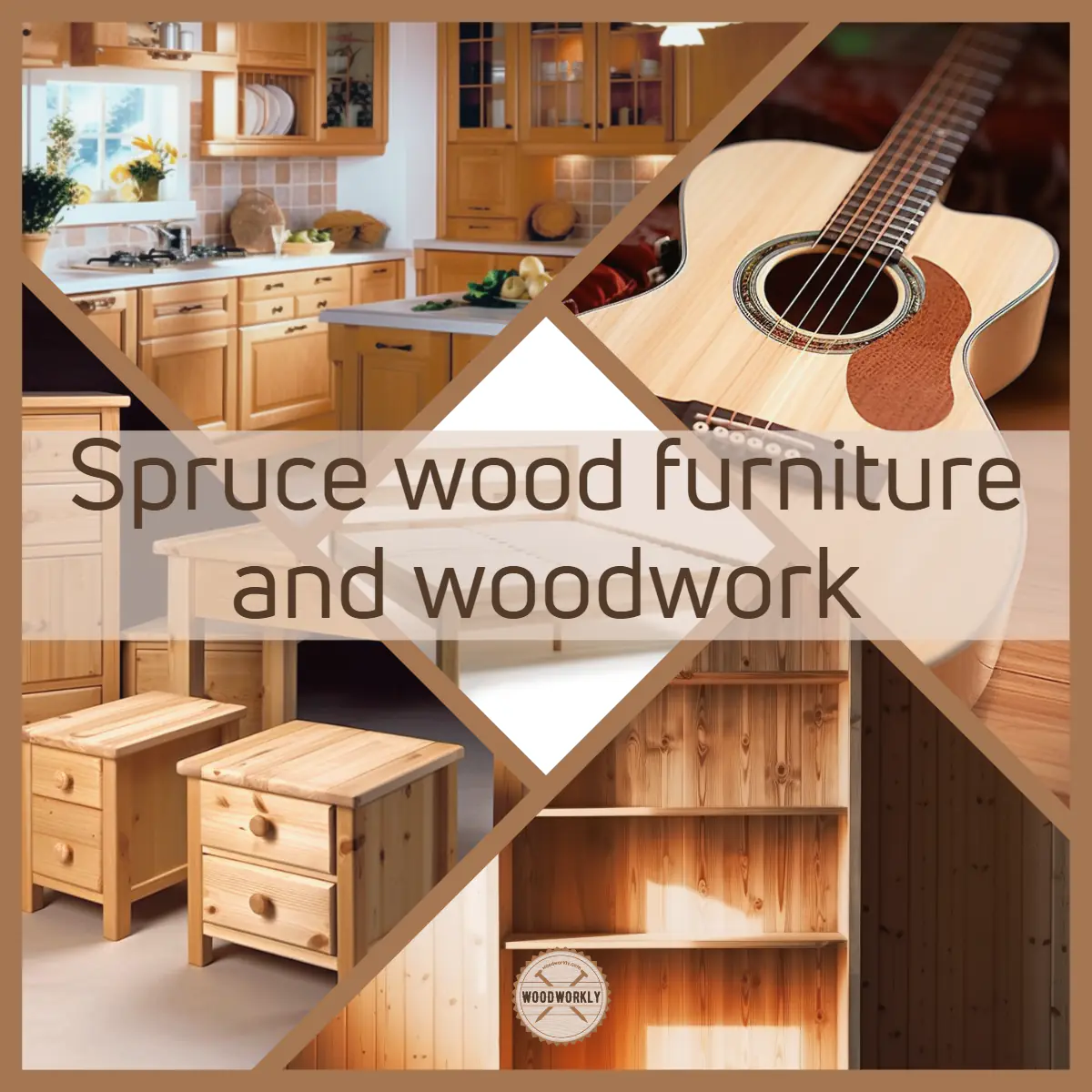
How Hard Is Spruce?
Spruce is softer than hardwoods and most softwoods as well.
According to the Janka hardness ratings, Spruce has a hardness rating of 510 lbf (2,268 N) which is relatively lower than many other kinds of wood.
They’re different species of Spruce which has nearly similar kind of properties and similar hardness values.
Here’re the Spruce wood species with their hardnesses,
- Sitka Spruce with a hardness rating of 510 lbf (2,268 N).
- White Spruce with a hardness rating of 480 lbf (2,135 N).
- Black Spruce with a hardness rating of 520 lbf (2,313 N).
- Engelmann Spruce with a hardness rating of 390 lbf (1,734 N).
- Red Spruce with a hardness rating of 490 lbf (2,135 N).
As you can see Spruce wood has different varieties with different colors. But when it comes to the hardness, all are nearly the same.
All the Spruce species have lower hardness, and all are considered softwoods.
When we look at the fiber structure of Spruce wood, it is lacking in pores and has small scarce resin canals.
Spruce has a closed pore structure. Those resin canals inside Spruce heal wounds and once cut those resin canals stiffen the lumber. These hardened resin canals are very stiff and lightweight.
Therefore, even though Spruce is considered as a softwood, it has a good density with superior qualities which surpass the properties of hardwoods as well.
Spruce comes from gymnosperm trees which are evergreen conifers.
They have needles and cones. When investigated under a microscope mostly there are no visible pores in the structure.
In terms of density, Spruce is a low dense wood than most of hardwoods.
The density of Spruce wood is around 400 kg/m3.
So, let’s have a look at the hardness of Spruce according to the Janka hardness scale.
Tip: Janka hardness test is the standard method to measure the hardness of any wood according to its resistance to wear and dent.
Woods with high wear and dent resistance score higher values in Janka hardness ratings.
According to the Janka hardness ratings, Spruce has a hardness rating of around 490 lbf (2,135 N) – 520 lbf (2,313 N).
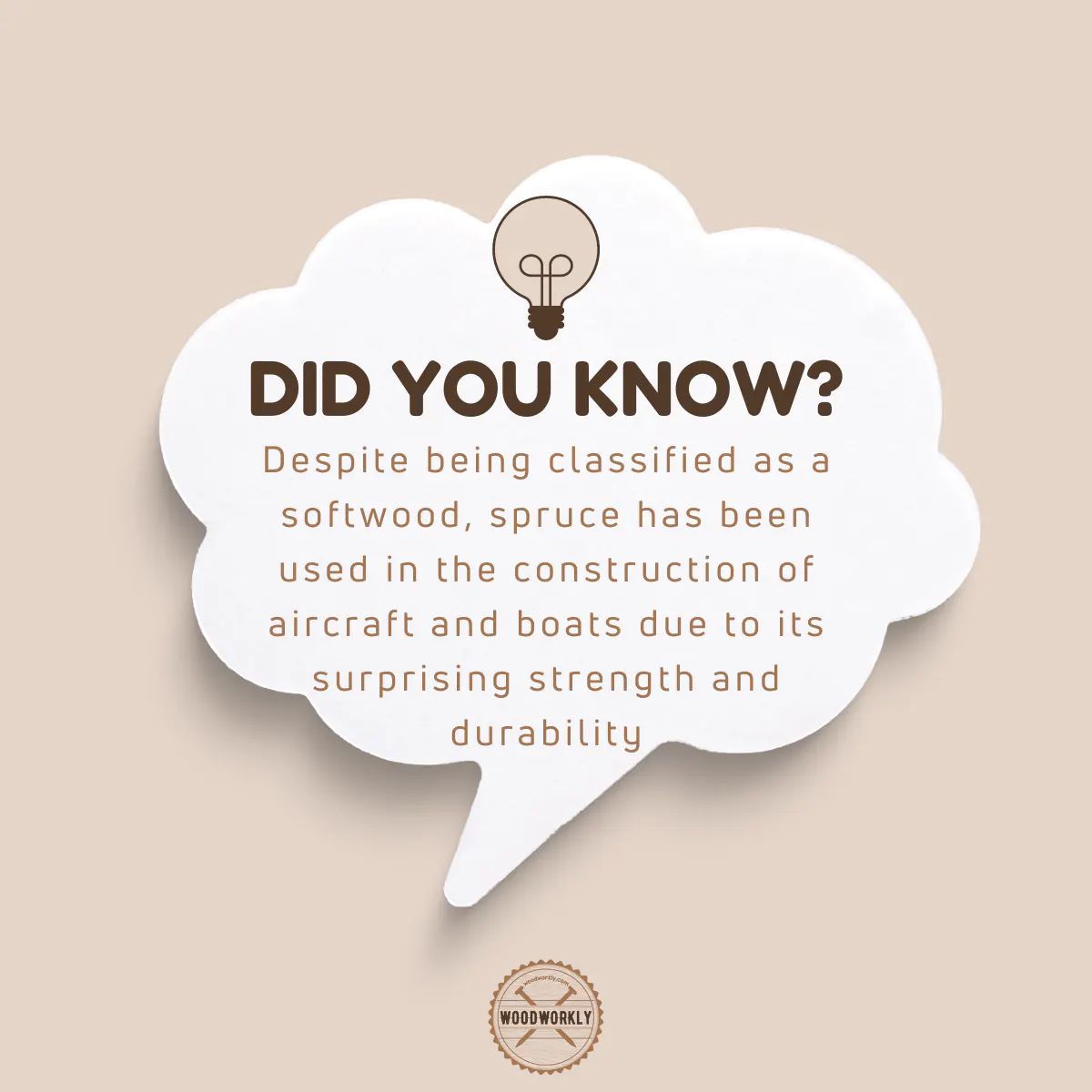
Spruce Wood Hardness Comparision
Here’re the hardness ratings of other popular wood types to get an idea about how hard Spruce is when compared to other wood types.
| Wood species | Hardness value |
| Brazilian Walnut | 3,684 lbf (16,390 N) |
| Red Mahogany, Turpentine | 2,697 lbf (12,000 N) |
| Brazilian Cherry, Jatoba | 2,350 lbf (10,500 N) |
| Golden Teak | 2,330 lbf (10,400 N) |
| Hickory, Pecan, Satinwood | 1,820 lbf (8,100 N) |
| Hard Maple, Sugar Maple | 1,450 lbf (6,400 N) |
| White Oak | 1,360 lbf (6,000 N) |
| Ash (White) | 1,320 lbf (5,900 N) |
| American Beech | 1,300 lbf (5,800 N) |
| Red Oak (Northern) | 1,290 lbf (5,700 N) |
| Yellow Birch / Baltic birch | 1,260 lbf (5,600 N) |
| Teak | 1,155 lbf (5,140 N) |
| Black Walnut, North American Walnut | 1,010 lbf (4,500 N) |
| Cherry | 995 lbf (4,430 N) |
| Black Cherry, Imbuia | 950 lbf (4,200 N) |
| Red Maple | 950 lbf (4,200 N) |
| Douglas Fir | 710 lbf (3,158 N) |
| Silver Maple | 700 lbf (3,100 N) |
| Hemlock | 540 lbf (2,402 N) |
| Black Spruce | 520 lbf (2,313 N) |
| Sitka Spruce | 510 lbf (2,268 N) |
| Red Spruce | 490 lbf (2,180 N) |
| White Spruce | 480 lbf (2,135 N) |
| Redwood | 420 lbf (1,868 N) |
| Engelmann Spruce | 390 lbf (1,735 N) |
| Sugar Pine | 380 lbf (1,690 N) |
As you can see, Spruce is a softwood, and its hardness is significantly lower than most of the woods that we use regularly.
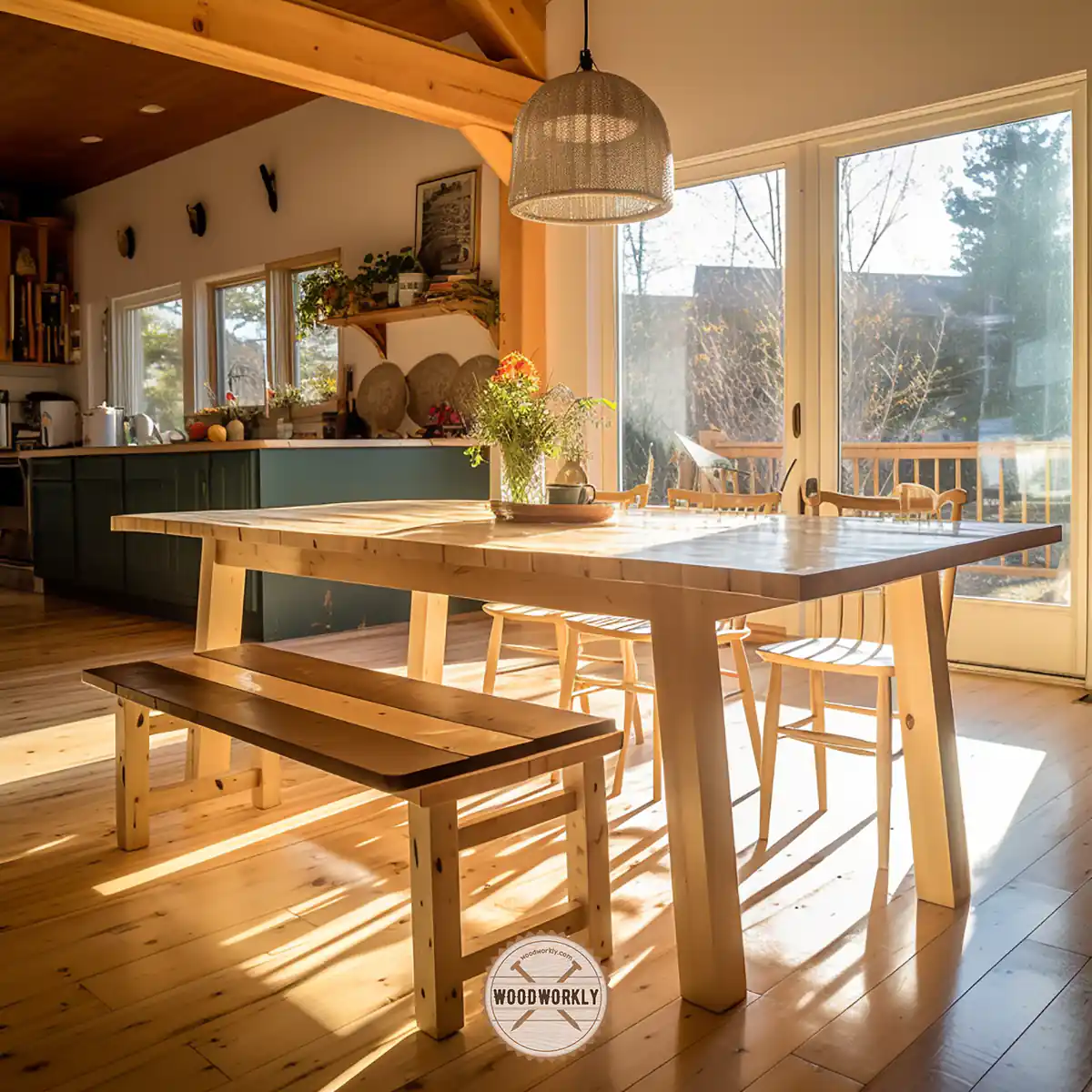
Do you know how to identify Spruce wood properly? Don’t worry! I’ll explain.
How Can You Identify Spruce Wood?
Identifying spruce wood, like any other wood, requires a keen eye for detail and a basic understanding of the characteristics that make this wood unique.
Here’re some features you can use to identify spruce wood,
- Observe the color and texture
- Consider the weight and hardness
- Examine the growth rings
- Smell the Wood
Let’s discuss those features in detail.
Observe the Color and Texture
Firstly, let’s consider the color of spruce wood. Spruce typically exhibits a pale color with a hint of yellow or red, varying slightly depending on the specific type of spruce.
For instance, Norway spruce features brown to reddish-brown heartwood surrounded by white sapwood.
The Engelmann spruce, on the other hand, has a yellow-to-white heartwood.
Spruce wood is also characterized by its fine, straight grain, and an even texture.
These traits give spruce a uniform appearance, which can be a strong clue when you’re trying to identify this type of wood.
Consider the Weight and Hardness
As a softwood, spruce has a lightweight and relatively low hardness level.
To put it into perspective, spruce ranks on the lower end of the Janka hardness scale, which is a measure of the resistance of wood to wear and denting.
For instance, Norway spruce has a Janka rating of 380, and Engelmann spruce has a rating of 390.
Comparatively, red oak, a common hardwood, has a Janka rating of 1,290.
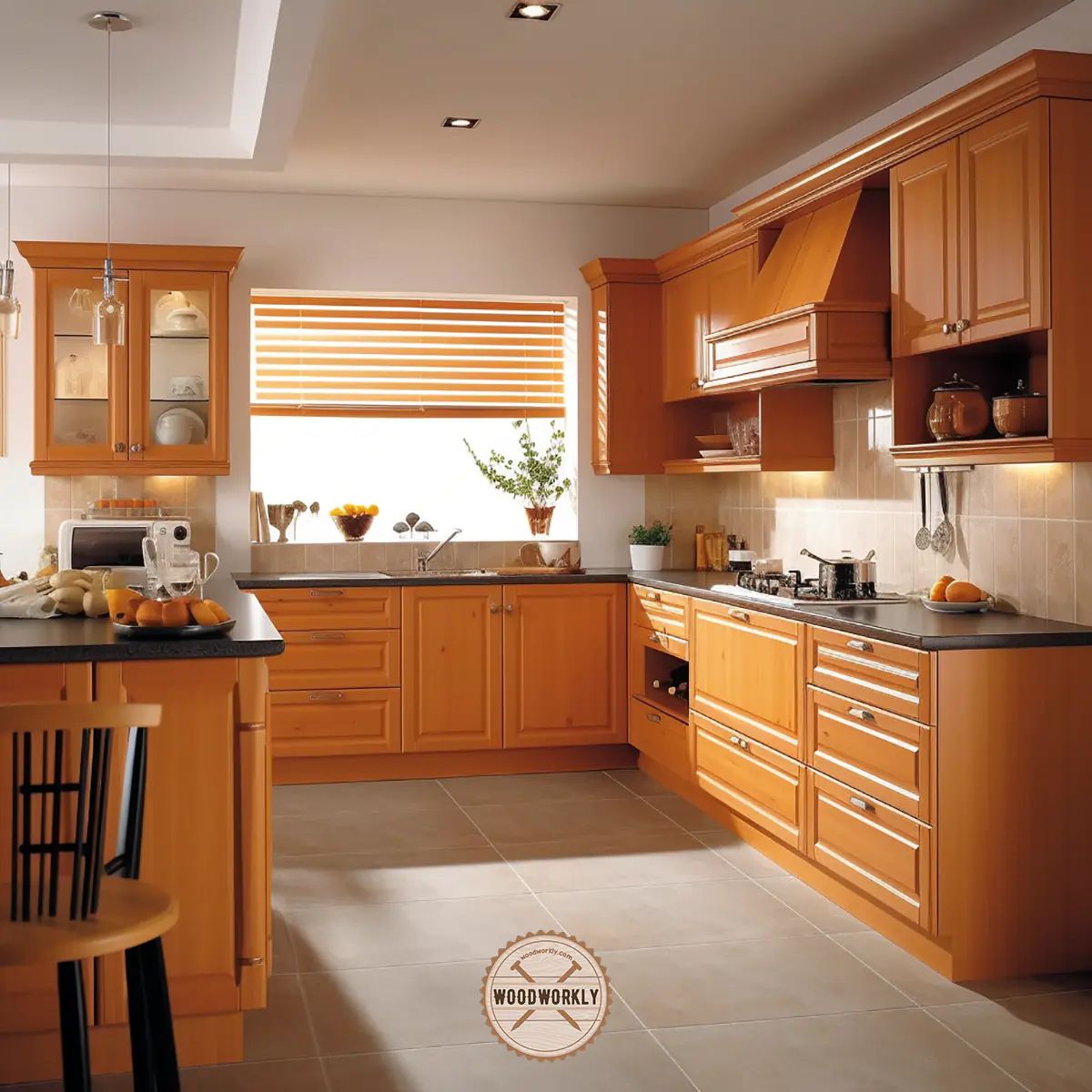
Examine the Growth Rings
One unique feature of spruce wood that can help in its identification is its growth rings.
Spruce trees have closed growth rings, which contribute to their suitability as a tonewood for musical instruments.
This might be a more advanced identifying feature, but for seasoned woodworkers or anyone involved in the creation of musical instruments, it’s a telling sign.
Smell the Wood
You might be surprised to know that smell can also be a distinguishing factor!
The scent of spruce wood is often described as being fresh and sharp, similar to the smell of the forest after a rain.
This characteristic aroma can help experienced woodworkers identify spruce wood.
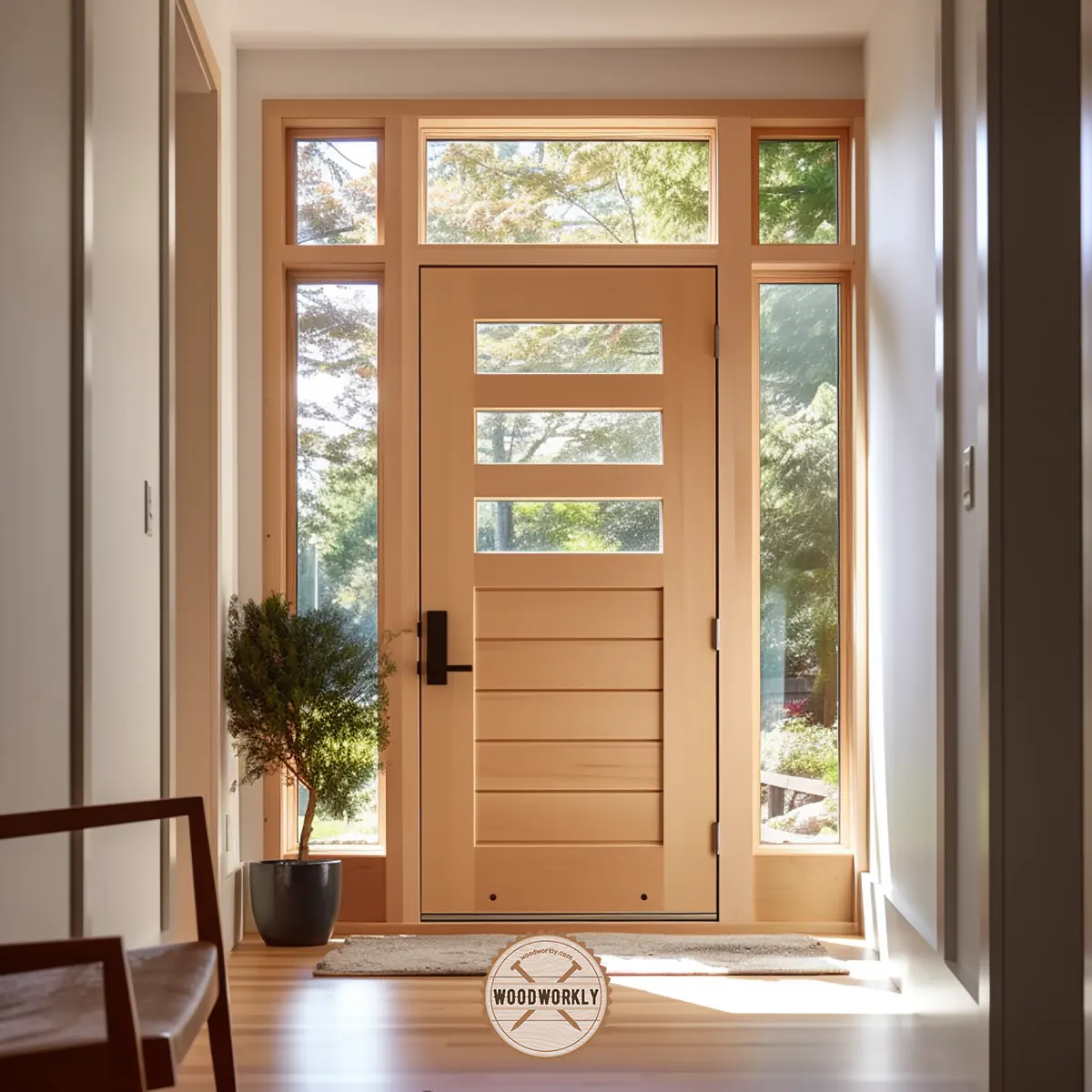
So, let’s find out what are the characteristic qualities of Spruce overcome the lower hardness of Spruce to become one of the most superior wood types on the planet.
Spruce Wood Characteristics
Spruce wood is a cream white to yellow color softwood with a uniform texture and straight wood grain.
The medium-sized resin canals are distributed variably or tangled to latewood.
In terms of its resistance, Spruce isn’t resistant to decay.
The workability of Spruce is significantly high. But you need to make sure the wood is free from knots.
Otherwise working with Spruce won’t be easy.
Even a beginner in woodworking can use Spruce to learn woodworking techniques because of its user-friendliness.
Spruce glues and finishes well. It takes stain well. Therefore you can easily give extra protection to the Spruce woodwork especially if you’re working on an outdoor woodworking application.
Spruce is non-toxic and able to use for any woodworking product, including kitchen utensils and children’s toys.
Overall, Here’re the most significant qualities of Spruce. They are,
- Lightweight
- Light in color
- Softwood
- High workability
- Poor weather resistance
- Low hardness and density
- High strength-to-weight ratio
The above qualities of Spruce are important to get an idea about its woodworking applications.
Here’re the main characteristic features of Spruce wood.
| Color | Cream white to yellow |
| Density | 400 kg/m3 – 700 kg/m3 |
| Hardness | 490 lbf (2,135 N) – 520 lbf (2,313 N) |
| Stiffness | 1.57 Mpsi |
| Wood Type | North American Softwood |
| Applications | Construction, millwork, musical instruments |
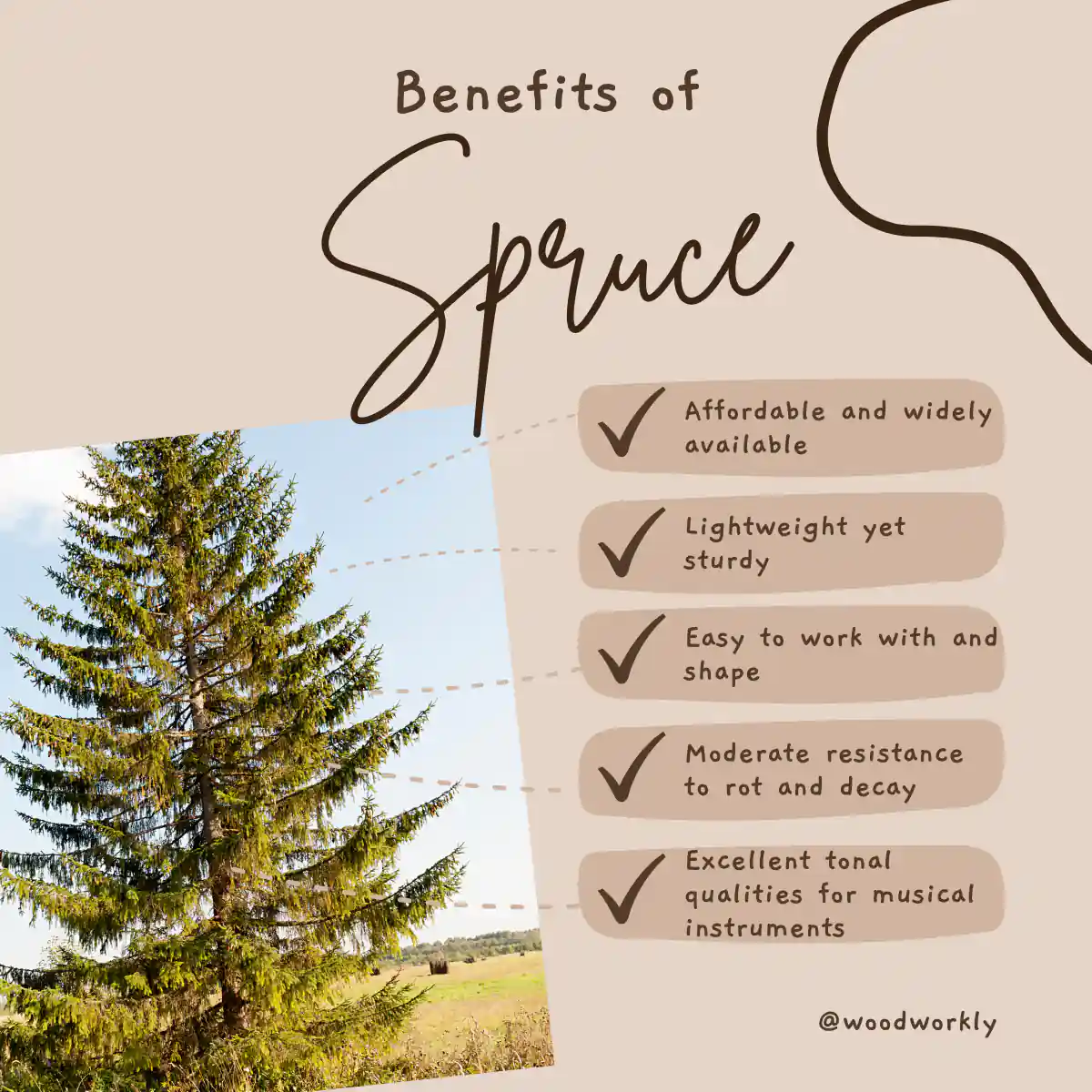
So, let’s find out what are the uses of Spruce that applicable to softwoods.
What Is Spruce Used For?
The uses of Spruce wood are listed as follows.
- Construction lumber
- Papermaking
- Musical instruments making
- Millwork
- Crates
- Boxes
- Boatbuilding
Spruce is useable for any kind of woodworking project because of its ideal strength-to-body ratio.
But generally, Spruce don’t use for furniture making because of its poor hardness and density. The durability of Spruce is also less than hardwoods.
If you wish Spruce woodwork to keep outside, you should apply proper wood finisher first with proper sanding.
Usually, Spruce takes stain well, and finishing won’t be a huge task because it’s softwood. but make sure to avoid getting a blotchy surface when finishing. Surface blotchiness will eventually ruin your beautiful woodwork.
Staining and finishing are useful because Spruce has no resistance to decaying and rotting.
The top finishing coat will prevent water droplets from penetrating inside the wood.
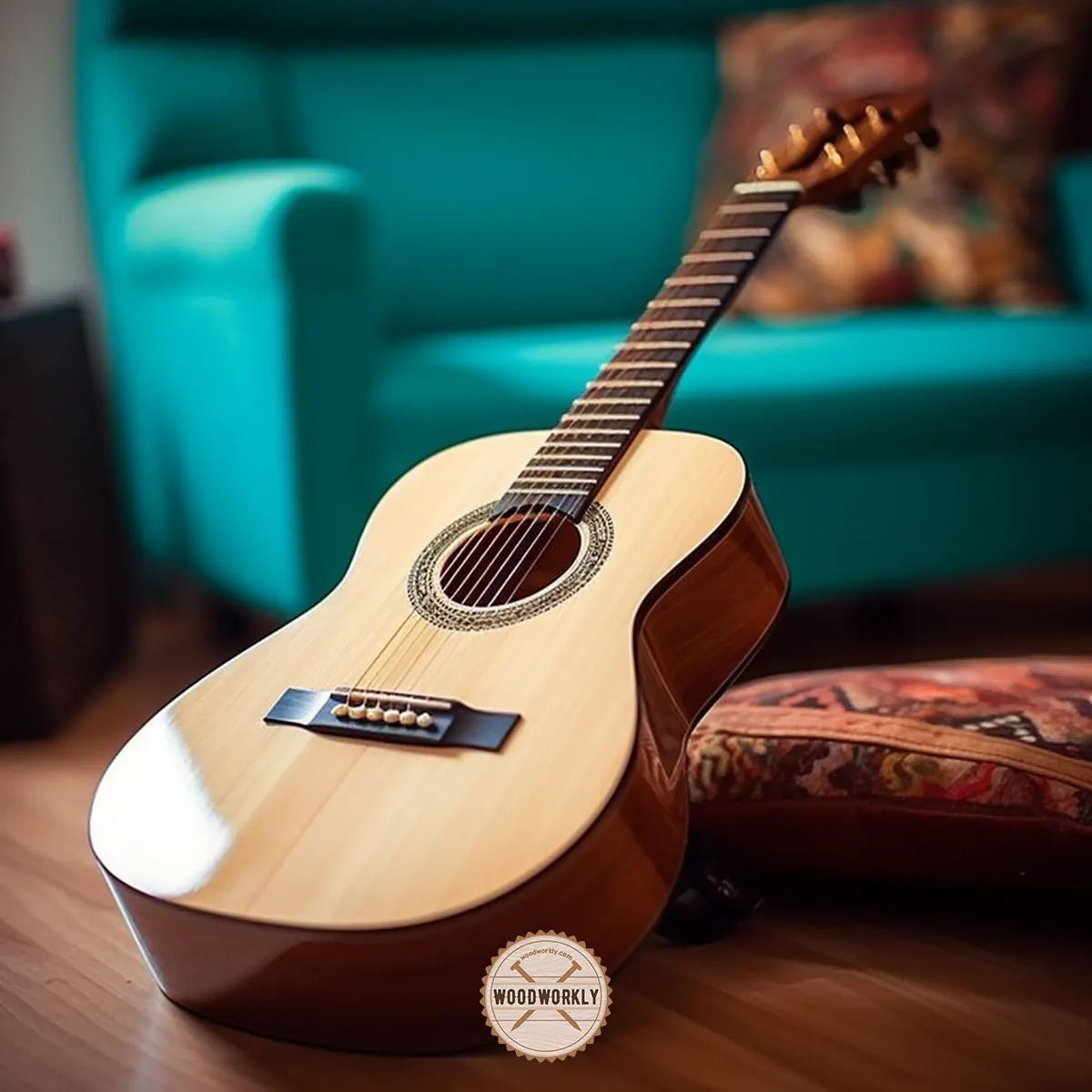
How Strong Is Spruce?
Spruce has an ideal strength-to-weight ratio. The compressive strength and bending strength of Spruce wood are significantly high.
The straight grain structure of Spruce help to increase its strength. Because of having an excellent strength-to-weight ratio, Spruce is one of the best woods for musical instruments without any doubt.
The compressive strength and bending strengths of Spruce wood are listed as follows.
- The compressive strength of Spruce is 5,610 psi
- The bending strength of Spruce is 10,200 psi
The compressive strength and bending strength of all the Spruce wood species are pretty much the same.
As you can see even though Spruce is considered as a softwood, its strength is pretty good and probably better than most of the hardwoods as well.
Great strength and excellent flexibility are the key factors of Spruce, that make it popular in the woodworking world.
Pros and Cons of Spruce Wood As a Softwood
| Pros | Cons |
| Lightweight | Poor decay resistance |
| Excellent compressive and bending strength | Poor hardness and density |
| High flexibility | Less durability |
| Attractive uniform texture | Low weather resistance |
| High workability | Easily get damaged by insect attacks |
| Straight grained wood | |
| Easy to finish | |
| Affordable | |
| Excellent strength-to-weight ratio |
As you can see, the advantages of Spruce are unique and useable for many woodworking applications.
This is why Spruce is a construction material.
That’s it, folks! hope you learned everything you wanted to know about, is spruce a hardwood with all the properties of the wood.
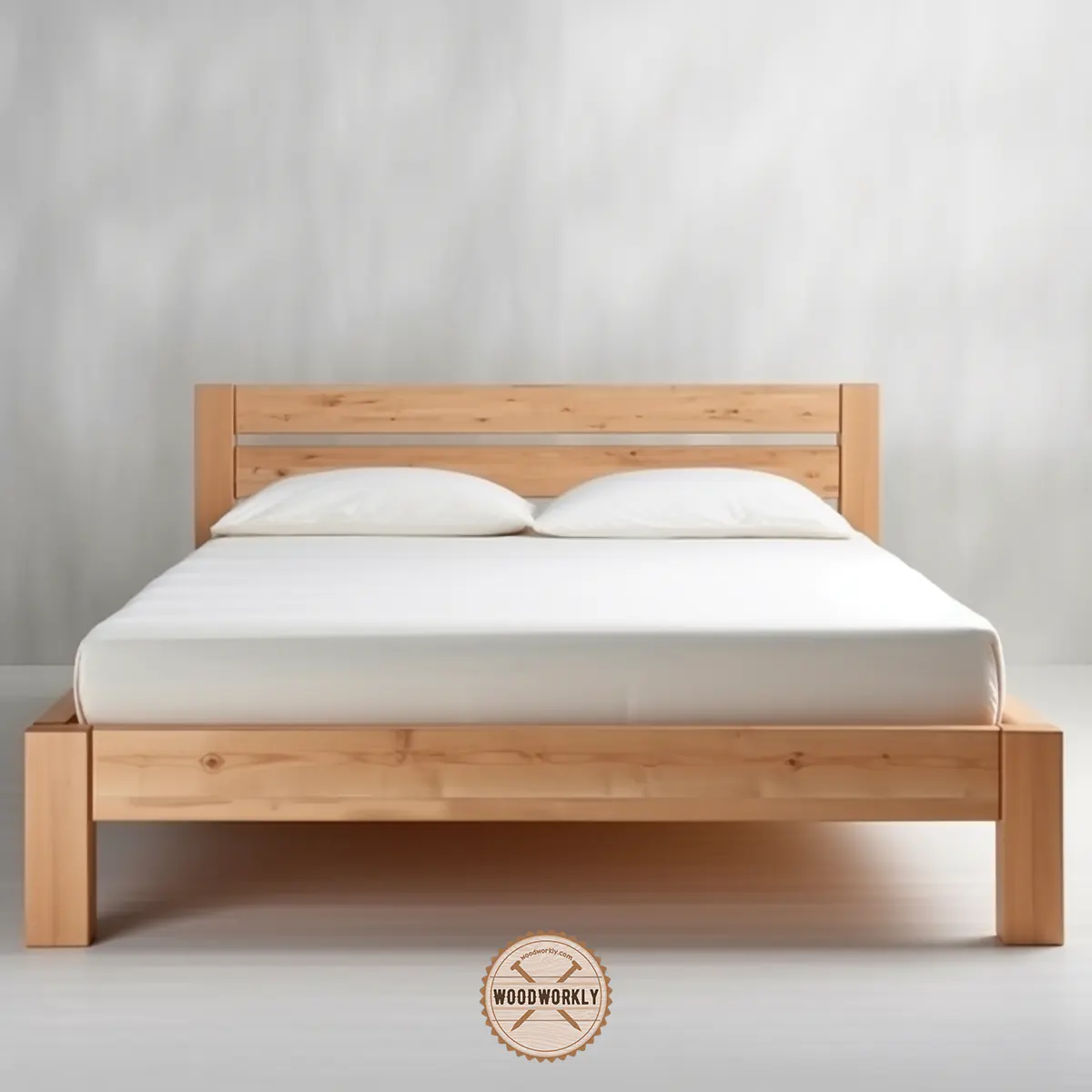
Let’s see the hardness of spruce wood compared to several other popular wood types.
Is Spruce Harder Than Pine?
Spruce is harder than Pine. Most all the species of Spruce are harder than Pine. Therefore, Pine wood can easily be replaced with Spruce.
According to the Janka hardness ratings, the hardness of Spruce and Pine are as follows,
| Wood Type | Hardness |
| Black Spruce | 520 lbf (2,313 N) |
| Sitka Spruce | 510 lbf (2,268 N) |
| Red Spruce | 490 lbf (2,180 N) |
| White Spruce | 480 lbf (2,135 N) |
| White Pine | 420 lbf (1,868 N) |
| Engelmann Spruce | 390 lbf (1,735 N) |
| Sugar Pine | 380 lbf (1,690 N) |
As you can see most of the species of Spruce are slightly harder than both white Pine and Sugar Pine.
Is Spruce Harder Than Oak?
Oak is significantly harder than Spruce. Oak is hardwood and Spruce is softwood. the hardness of Oakwood is far above the hardness of Spruce.
According to the Janka hardness ratings, the hardness of Spruce and Oak are as follows,
| Wood Type | Hardness |
| White Oak | 1,360 lbf (6,050 N) |
| Red Oak | 1,290 lbf (5,738 N) |
| Black Spruce | 520 lbf (2,313 N) |
| Sitka Spruce | 510 lbf (2,268 N) |
| Red Spruce | 490 lbf (2,180 N) |
| White Spruce | 480 lbf (2,135 N) |
| Engelmann Spruce | 390 lbf (1,735 N) |
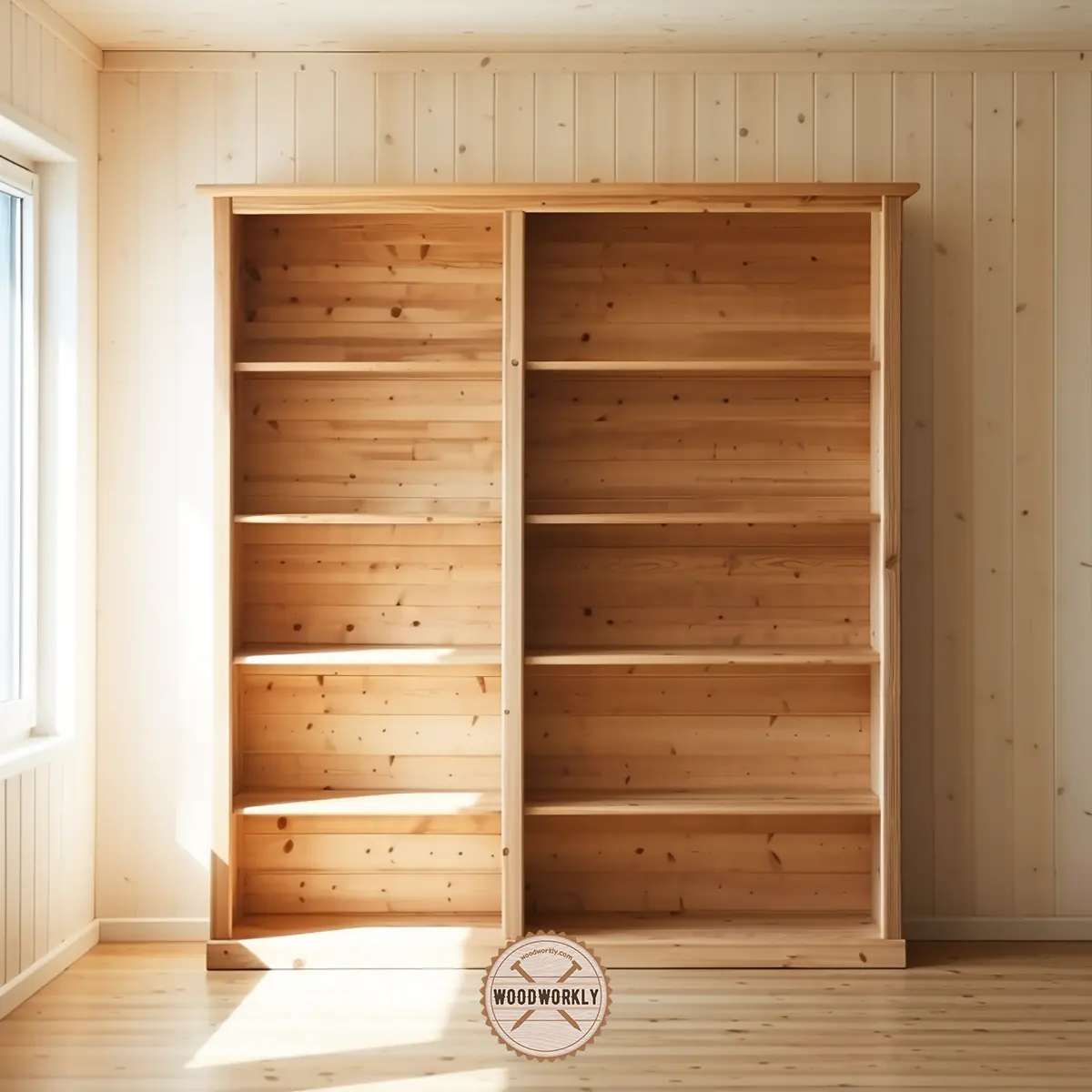
Is Spruce Harder Than Cedar?
Red Cedar is harder than Spruce, but white Cedar is slightly softer than Spruce.
There’re is a significant difference in hardness between red Cedar and White Cedar.
According to the Janka hardness ratings,
| Wood Type | Hardness |
| Red Cedar | 900 lbf (4,003 N) |
| Black Spruce | 520 lbf (2,313 N) |
| Sitka Spruce | 510 lbf (2,268 N) |
| Red Spruce | 490 lbf (2,180 N) |
| White Spruce | 480 lbf (2,135 N) |
| Engelmann Spruce | 390 lbf (1,735 N) |
| White Cedar | 320 lbf (1,423 N) |
Is Spruce Harder Than Douglas Fir?
Douglas Fir is harder than Spruce.
According to the Janka hardness ratings, the hardness of Spruce and Douglas Fir are as follows,
| Wood Type | Hardness |
| Douglas Fir | 710 lbf (3,158 N) |
| Black Spruce | 520 lbf (2,313 N) |
| Sitka Spruce | 510 lbf (2,268 N) |
| Red Spruce | 490 lbf (2,180 N) |
| White Spruce | 480 lbf (2,135 N) |
| Engelmann Spruce | 390 lbf (1,735 N) |
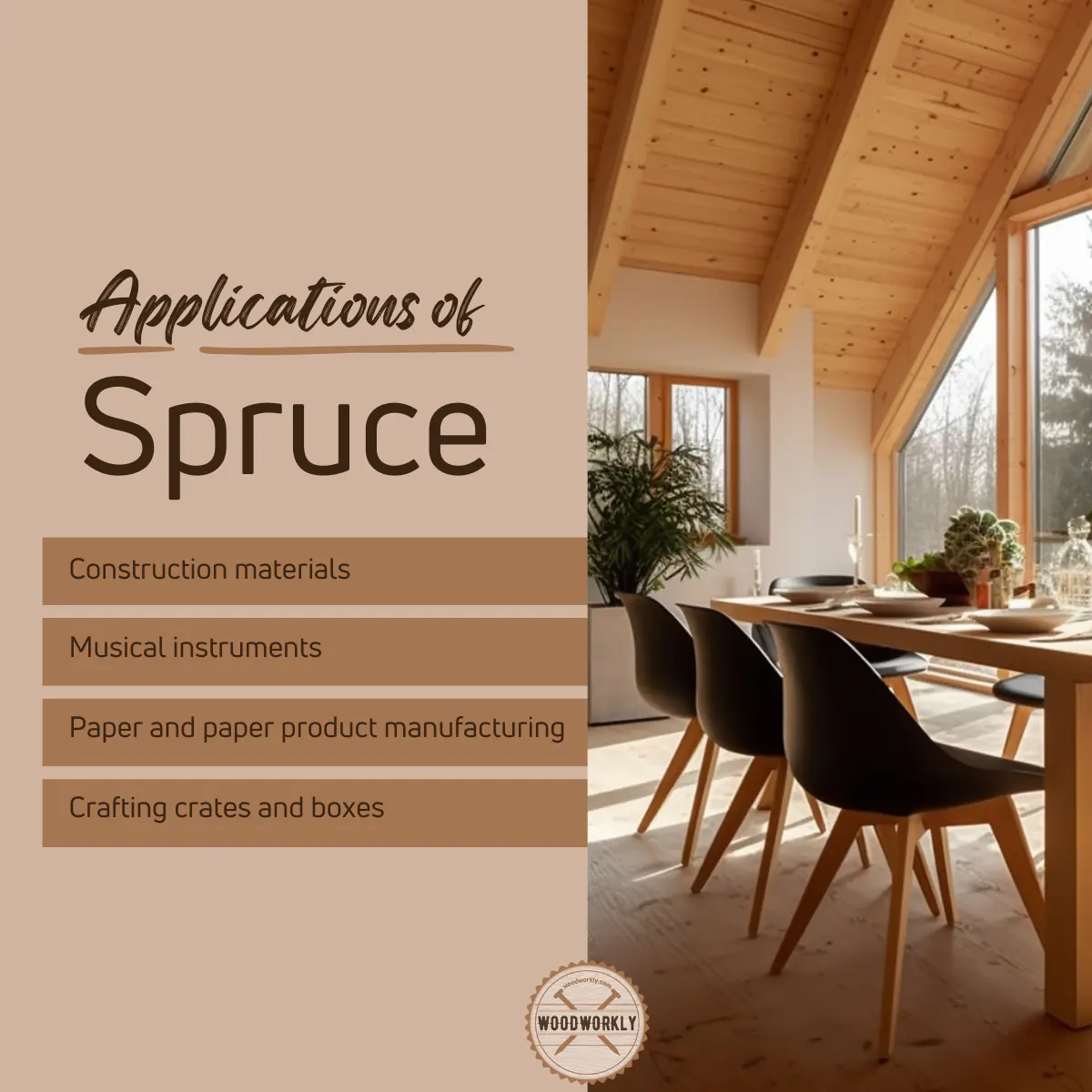
So, let’s answer some frequently asked questions as well.
FAQs
What are the key characteristics of spruce wood?
While spruce wood is known for its pale color and fine, straight grain, what really stands out is its distinctive aroma – a fresh, sharp scent reminiscent of a rain-washed forest.
How does spruce wood compare to hardwoods in terms of durability?
Contrary to what one might assume, spruce, despite being a softwood, holds up well; it’s not as hard as hardwoods, but it does offer moderate resistance to rot and decay.
Can spruce wood be used for outdoor projects?
While spruce can be used outdoors, it needs protection – such as tight sealing or pressure treating – from elements and insect attacks; however, other woods may be better suited for such tasks.
Is spruce wood expensive?
Affordability is one of Spruce’s strong suits; it’s generally less expensive than many hardwoods, making it a popular choice for various projects.
Why is spruce wood commonly used in making musical instruments?
It’s the unique tonal quality of spruce, derived from its closed growth rings, that makes it a go-to choice for crafting instruments like violins and guitars.
How does spruce wood respond to staining?
Staining spruce can be tricky due to its open, large grain, which can lead to uneven or blotchy absorption of stain; using a pre-stain conditioner is recommended to ensure a more uniform finish.
Did I cover all you wanted to know about: Is Spruce a Hardwood?
In this article, we’ve deeply discussed whether is Spruce a hardwood and how hard it is, and characteristic qualities of Spruce wood are discussed with pros and cons.
The strength of Spruce wood species is identified and described as what makes Spruce so special in woodworking.
Spruce is softwood with excellent physical properties. It is classified as a softwood, which refers to its origin from coniferous trees. Despite its name, softwood is durable and widely used in various industries, including construction and musical instrument manufacturing.
Furthermore, I’ve answered frequently asked questions as well.
Hope you have gained good knowledge about, is Spruce a hardwood and the qualities of Spruce.
So, let’s jump into your next woodworking project with beautiful Spruce wood. Have fun in woodworking!